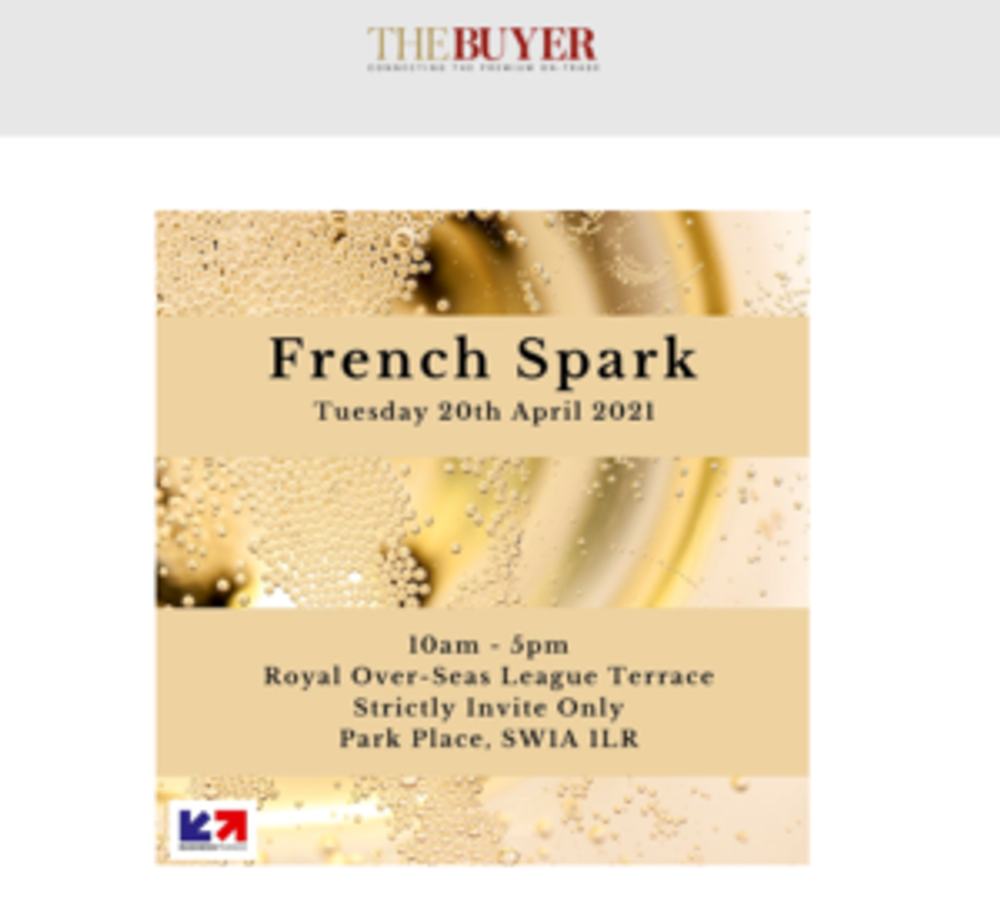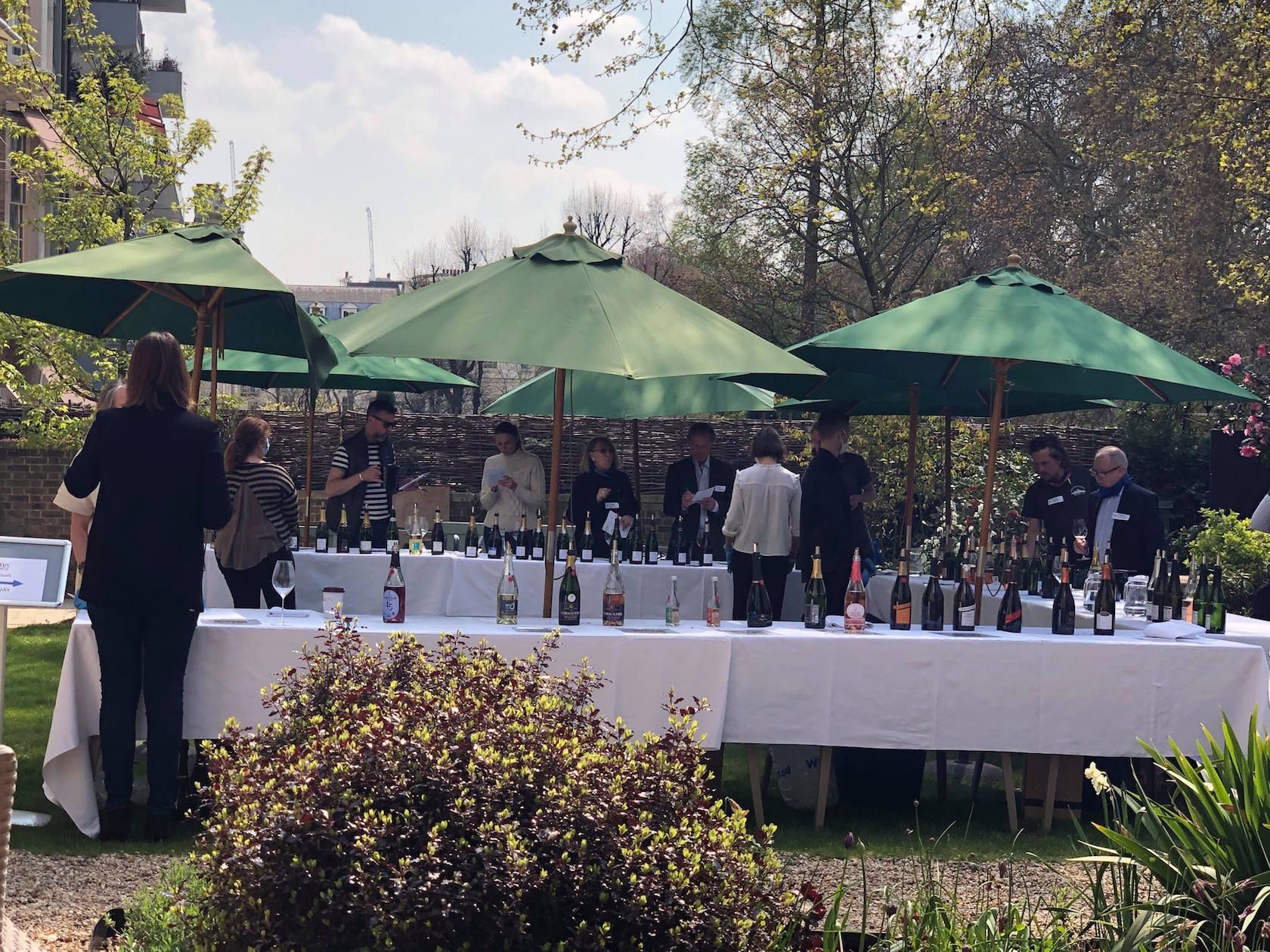“So, 10 great discoveries in just over 90 minutes, not bad for a Tuesday afternoon I would otherwise no doubt have spent with my old friend Zoom,” writes Keay.
The anticipatory walk into the French sparkling tasting area? Check. Bottles lined up on tables? Check. Glasses and tasting booklets? Check. The chatty PR handing out name tags, the look around for familiar faces? Double check.
Was I actually, seriously, about to attend a physical tasting? To swirl, sniff and spit in the presence of other carbon-based life forms – without a Zoom app or mini-sample in sight?
“The past is a foreign country,” LP Hartley famously wrote, “They do things differently there.” Including tastings.
Although this was my first physical wine tasting since an eerily empty Flint Wines event on March 8, 2020 – with Covid 19 already raging through London – ‘French Spark’, organised by Business France, was very different. For one, it was socially distanced with just 11 tasters per 90 minute session, on the terrace of the Royal Overseas League, overlooking Green Park. For another, you had to hang onto your personal spitoon, although my guess is that the terrace lawn also absorbed a fair amount of discarded wine. And no Carr’s biscuits or nibbles obvs.

But this wonderfully organised tasting in a great venue – with good weather too – felt like a thing of wonder in today’s grim pandemic reality. And for me a challenge – French sparkling is outside my normal wine-comfort zone so I was determined to make some discoveries.
And I did, at the end of the day no other country offers such diversity in styles of sparkling wine & prices. Business France had approached all wine regions for samples to show, with the emphasis on producers without representation in the UK. They had come up with a great selection of 65+ sparkling wines from all over France with seven out of the eight different appellations of Crémant represented, Champagne and other sparkling wines.
To see the full listing click here and to request samples click here.
Anyhow, here are my top 10 French sparkling wines of the day, in order of tasting
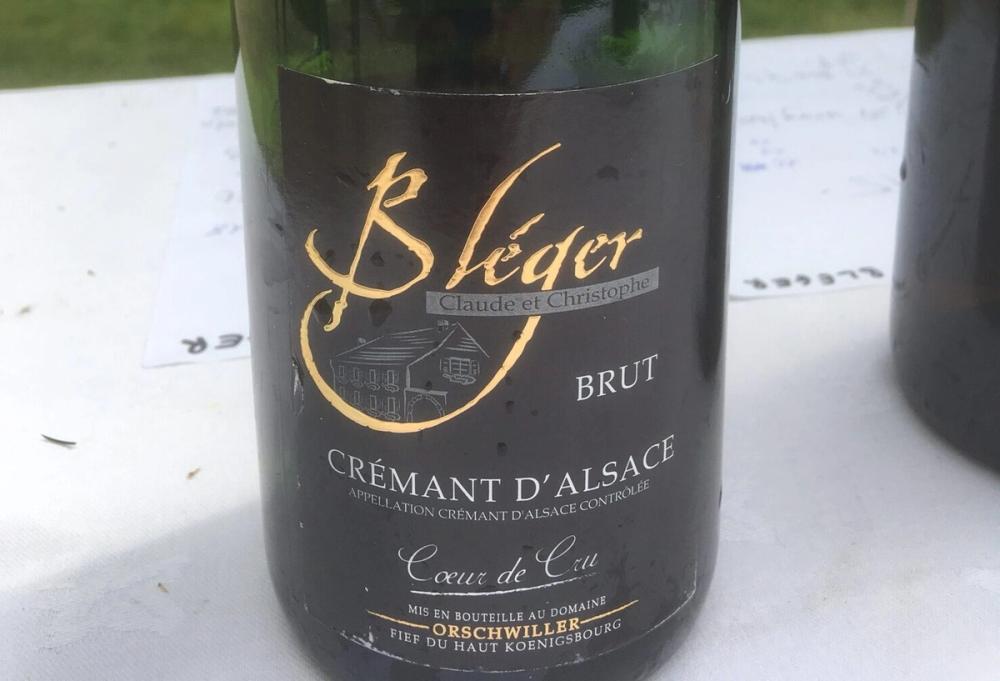
Domaine Claude et Christophe Bleger is a small organic Alsace producer making around 75,000 bottles of pretty much everything, using all 7 official varieties and put forward three Crémant, all of which were good. But for me it it was the first Crémant d’Alsace Coeur de Cru 2017 which ticked all the boxes. A moreish blend of Pinot Noir, Pinot Gris and Auxerois, just 3 g/l, this had a rounded palate with suggestions of toasted brioche. (Ex cellar €9-11). Alsace.
For a great left field choice, Vignes Secretes Crémant Rose Le 45 NV takes some beating. Comprising Merlot, Cabernet Sauvignon and Malbec, this was very dark pink, showed firm tannins and was pleasingly dry and characterful, possibly reflecting the fermentation of the varieties being done separately in concrete vats stored underground. Really distinctive. Bordeaux. (Ex cellar €9-11)
Maison Louis Picamelot has a pretty impressive pedigree, founded almost 100 years ago with vineyards covering 18 hectares from Côte Chalonnaise to Côte de Beaune and Dijon, and producing some 350,000 bottles a year including from bought in grapes. If these wines are good enough for quality restaurants such as Alain Ducasse, who am I to argue? Four wines shown, all good, but my money would go to the delicious Blancs de Noir Crémant En Chazot 2016 100% Pinot Noir, and a rounded, sophisticated and weighty counterpart to Crémant Les Reipes 2015 a Blanc de Blancs from 100% Chardonnay, a beautifully distinctive wine with freshness and character. I note that Wine Enthusiast magazine has given these wines 92 and 93 points respectively, and I’m not surprised. A steal at €7-9 a piece. Burgundy.
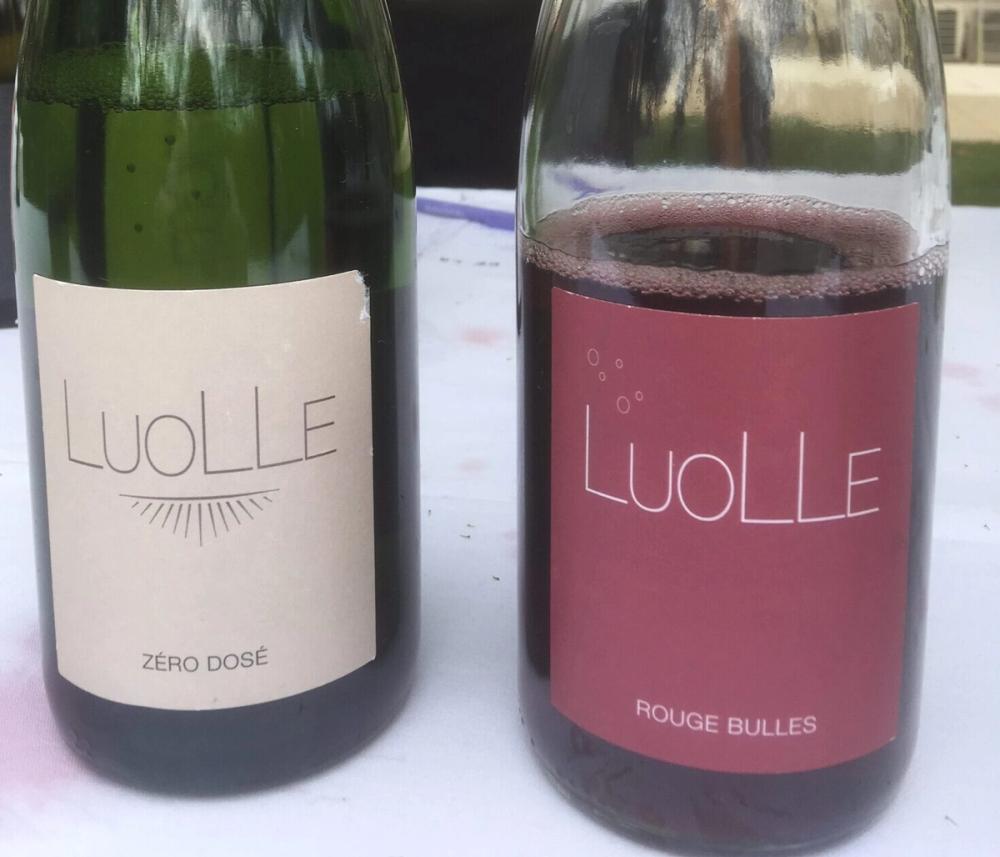
Organic producer Domaine de la Luolle is best known for its Givry and Mercurey but all six of the sparkling wines they showed here were of interest, well made, balanced and fruit-driven. Choosing two, I would go for the Crémant Zero dose, 2018 extra Brut made from 65% Chardonnay and 35% Aligote, very distinctive and full on. Completely different is the Rouge bulles 2017 an unusual slightly off dry (12g dosage per litre) red mousseux made from 100% Gamay, dark colours but unusually fresh and light on the palate. Great. Both €9 ex cellar. Burgundy.
Pretty much everyone was taken by Champagne Philippe Dechelle’s Cuvée Nude, Brut Nature 2015, a highly distinctive 50/50 blend of Pinot Noir and Chardonnay. The bottle and of course the name were striking but the contents just as much so, wonderfully elegant bubbles and a full, complex brioche palate courtesy of four years lees contact. Masterful Champagne.
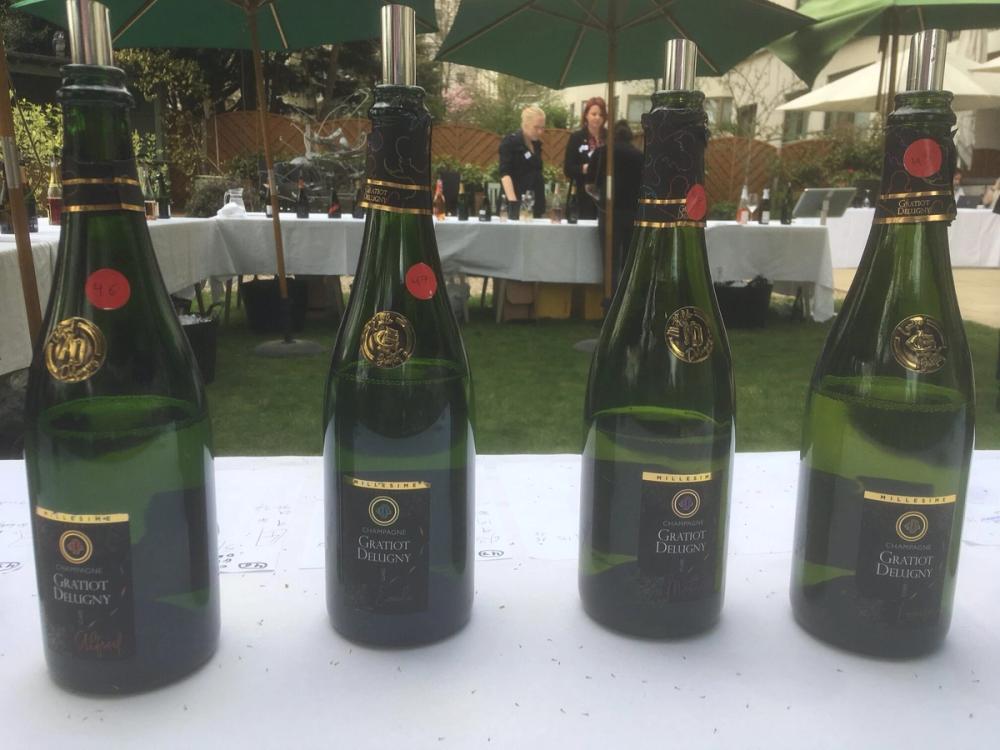
Tasting Champagne Gratiot Delugny’s Bulles d’Avenir 2012 was a treat. What’s so special? This is one of the first Champagnes to be made from 100% Petit Meslier, a rare light-skinned white variety made by crossing Savagnin and Gouais Blanc. Sometimes used as a small component of Champagne, it is very rare to find this aromatic, citrusy and finicky variety used to make a whole wine, but then this is an innovative Champagne house now working with Pinot Blanc and Pinot Gris as well. Bulles d’Avenir was the Marmite wine of the tasting with many finding clearly it a bit too off-piste and acidic. I liked it as I did David Gratiot’s Millésimé range of Blanc de Blancs named after his ancestors and oak aged for anything up to 18 years. All wonderfully distinctive, I made the acquaintance of Louise (2009), Mathilde (2008) Emile (2005) but maintained a particular admiration for and spent most time with Alfred Millésimé 2004, a wonderfully balanced, warm flavoured and buttery rich wine that I could have shared company with all afternoon. Ex-cellar €30 and €29 respectively. Champagne.
Rhône-based and family-owned Poulet & Fils makes a great range of Crémant de Die and Clairette de Die, the sweeter, lower alcohol (typically 8.5%) sparkling wine widely drunk in the Rhône. Nothing fowl (‘poulet’ – geddit? Ed.) at all about these wines, which were also very well priced at around €3-5 a bottle ex-cellar. I note that Wine Enthusiast rightly gave the Crémant de Die NV – made from Aligoté and Muscat giving melon and passionfruit on the palate – 90 points. However, I was even more taken with the Clairette de Die Tradition NV, very fresh and accessible, lots of peach nectar on the palate and a perfect way to round off the tasting. Rhône.
So 10 great discoveries in just over 90 minutes, not bad for a Tuesday afternoon I would otherwise no doubt have spent with my old friend Zoom. As I turned into Green Park, I looked back at the terrace and wondered: Could it be that I’ve seen the future of wine tasting – and it’s outside? As we climb slowly out of the pandemic, assuming the weather allows and venues are available, it’s frankly a bit of a no-brainer.
If you couldn’t make the French Spark tasting and you want to try any of the French sparkling wines on show then use this link and order your samples.
